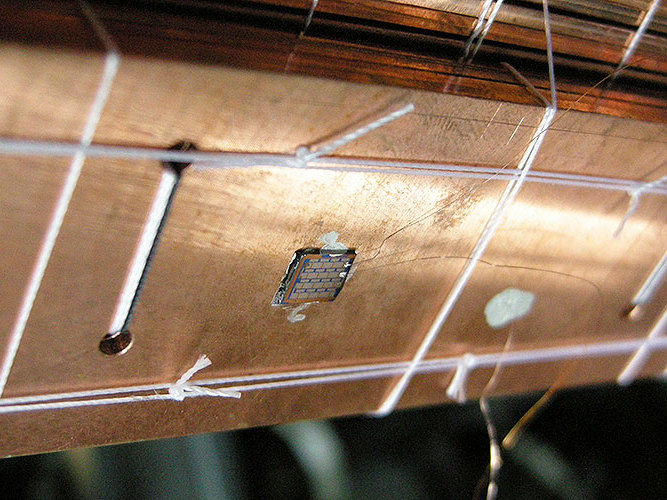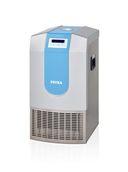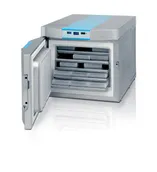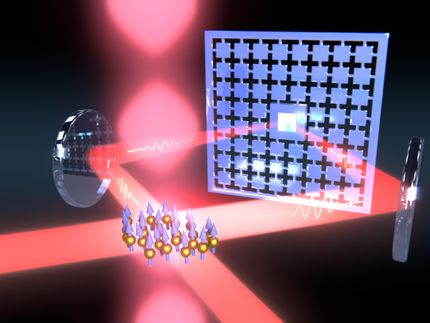The Coldest Chip in the World
Physicists at the University of Basel have succeeded in cooling a nanoelectronic chip to a temperature lower than 3 millikelvin. The scientists from the Department of Physics and the Swiss Nanoscience Institute set this record in collaboration with colleagues from Germany and Finland. They used magnetic cooling to cool the electrical connections as well as the chip itself.

A chip with a Coulomb blockade thermometer on it is prepared for experiments at extremely low temperatures.
University of Basel, Department of Physics
Even scientists like to compete for records, which is why numerous working groups worldwide are using high-tech refrigerators to reach temperatures as close to absolute zero as possible. Absolute zero is 0 kelvin or -273.15°C. Physicists aim to cool their equipment to as close to absolute zero as possible, because these extremely low temperatures offer the ideal conditions for quantum experiments and allow entirely new physical phenomena to be examined.
Cooling by turning off a magnetic field
The group led by Basel physicist Professor Dominik Zumbühl had previously suggested utilizing the principle of magnetic cooling in nanoelectronics in order to cool nanoelectronic devices to unprecedented temperatures close to absolute zero. Magnetic cooling is based on the fact that a system can cool down when an applied magnetic field is ramped down while any external heat flow is avoided. Before ramping down, the heat of magnetization needs to be removed with another method to obtain efficient magnetic cooling.
A successful combination
This is how Zumbühl’s team succeeded in cooling a nanoelectronic chip to a temperature below 2.8 millikelvin, thereby achieving a new low temperature record. Dr Mario Palma, lead author of the study, and his colleague Christian Scheller successfully used a combination of two cooling systems, both of which were based on magnetic cooling. They cooled all of the chip’s electrical connections to temperatures of 150 microkelvin – a temperature that is less than a thousandth of a degree away from absolute zero.
They then integrated a second cooling system directly into the chip itself, and also placed a Coulomb blockade thermometer on it. The construction and the material composition enabled them to magnetically cool this thermometer to a temperature almost as low as absolute zero as well.
“The combination of cooling systems allowed us to cool our chip down to below 3 millikelvin, and we are optimistic than we can use the same method to reach the magic 1 millikelvin limit,” says Zumbühl. It is also remarkable that the scientists are in a position to maintain these extremely low temperatures for a period of seven hours. This provides enough time to conduct various experiments that will help to understand the properties of physics close to absolute zero.
Original publication
Other news from the department science
These products might interest you

FRYKA - circulating coolers ULK by FRYKA Kältetechnik
Recirculating chillers from FRYKA - whisper-quiet, efficient and sustainable
Cool with a clear conscience

B 35 by FRYKA Kältetechnik
Deep freezer for arctic cold - directly on your lab bench
Your samples - ready to hand thanks to decentralized storage and safely cooled at up to - 85 °C

Get the chemical industry in your inbox
By submitting this form you agree that LUMITOS AG will send you the newsletter(s) selected above by email. Your data will not be passed on to third parties. Your data will be stored and processed in accordance with our data protection regulations. LUMITOS may contact you by email for the purpose of advertising or market and opinion surveys. You can revoke your consent at any time without giving reasons to LUMITOS AG, Ernst-Augustin-Str. 2, 12489 Berlin, Germany or by e-mail at revoke@lumitos.com with effect for the future. In addition, each email contains a link to unsubscribe from the corresponding newsletter.

























































